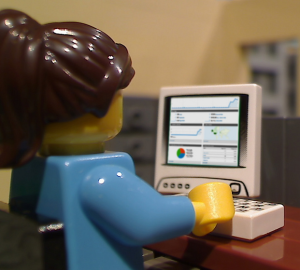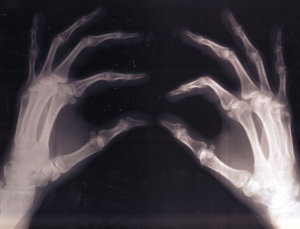 These days, with online gaming, Twitter, millions of blogs to get lost on, we can spend long hours on the Internet and not even realize the whole day has passed. Sometimes the only indication that you may have spent too much time hunched over your computer is the sharp, shooting pain that you feel in your wrists, neck and sometimes back.
These days, with online gaming, Twitter, millions of blogs to get lost on, we can spend long hours on the Internet and not even realize the whole day has passed. Sometimes the only indication that you may have spent too much time hunched over your computer is the sharp, shooting pain that you feel in your wrists, neck and sometimes back.
The pain may only come at night when you try to stretch away the kinks in your body after a day staring at screens and clicking your mouse. We all tend to try and muscle through pain till it gets unbearable. When you finally go to see your doctor, he may ascribe the pain to RSI.
Repetitive Strain Injuries are a group of injuries that are brought about by the repetitive movement in one direction and/or in sustained, awkward positions. They can occur in any region of the body. They commonly affect areas with joints such as the elbow and wrists but sometimes also affect the torso. Some common names used to describe them are tennis elbow, golfers elbow, carpal tunnel, gamekeepers thumb and Blackberry thumb.
Many people think RSIs are a modern day ailment, a consequence of changing working habits and tools, such as computers, smartphones etc. The truth is that RSIs have been around for centuries. They were documented by surgeons such as Fritz de Quervain and James Paget who observed soreness and tenderness in industrial workers as far back as 1895.
In modern times, the use of computers, laptops and our general poor posture at our workstations has made it a more prominent condition. Most people slouch at their desks, leading to strain on their backs. The angle and position in which your wrists are when pecking away at your keyboard can contribute to pain in your wrist and finger joints too.
Don’t be alarmed. There are many ways to manage and cure this, let me give you a few tips to avoid it in the first place.
- LOOSEN UP YOUR HANDS – By simply rotating clockwise and anti-clockwise, for a few minutes before starting an exercise loosens the muscles and tendons, and prepares them for the task at hand. Starting any activity ‘cold’ is a recipe for disaster down the line. Take a few minutes to prepare yourself.
- NIX RSI IN THE NECK – To prevent the strain that will develop when you look down at your laptop for hours on end, do exercises that will move your neck through its full range of movement. This is to ‘warm’ up the muscles in the neck.
Do these by dropping your chin down to your chest. Next, slowly tilt your head back to look at the ceiling. Now, slowly turn your head to the left. Hold for a second and then to the right. Both times, try to look over your shoulder. These movements help to stretch the muscles of the neck.
 One last tip is to stretch your whole body. You start this by interlacing your fingers and stretch your body as much as you can. I like to stretch upwards, rising to the tips of my toes and stretching my hands out as far as I can. Hold this position for a second or two and relax. Repeat a few more times to help get your muscles limber.
One last tip is to stretch your whole body. You start this by interlacing your fingers and stretch your body as much as you can. I like to stretch upwards, rising to the tips of my toes and stretching my hands out as far as I can. Hold this position for a second or two and relax. Repeat a few more times to help get your muscles limber.
These simple sounding steps will help keep RSI at bay. Making these simple acts a part of your daily routine will lead to a reduction in the occurrence of RSI.
If you already have RSI, the treatment options available include acupressure by a qualified practitioner; others prefer the use of cortisone injections in the affected areas. Others still choose to use painkillers such as Ibuprofen.
Have you had any of the RSIs; especially laptop related? Please share your experience and how you got better. Cheerio!!
Photo: Facebook yapping, knuckles, stretching
